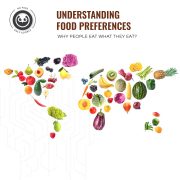EATING OUT
Introduction:
Eating out has become a popular trend in modern times due to busy schedules, the desire for convenience, and the availability of a variety of cuisines. However, eating out can be challenging for individuals who are trying to maintain a healthy lifestyle. Restaurants typically serve larger portion sizes, and calorie-dense foods, and offer limited healthy options. In this blog, we will discuss how to manage eating out according to one’s goals, bust some common myths, and explore whether eating out is good or bad for one’s health.
Reasons for Eating Out:
There are several reasons why people choose to eat out, including travel, work, and cultural experiences. While traveling, one might not have access to cooking facilities or may want to try local cuisine. Similarly, during work hours, people might not have enough time to pack their meals and prefer to eat out. Cultural events or celebrations also provide an opportunity to try new foods and flavors.
Manage according to their goals:
It is essential to be mindful of one’s goals while eating out. For individuals trying to maintain their fitness goals, it is crucial to choose healthier options such as grilled or baked foods, salads, and vegetables. People with specific dietary needs, such as those with metabolic syndromes, should communicate with the chef or staff about their requirements. Those with lifestyle goals, such as weight management or maintaining a balanced diet, should choose meals with a good balance of macronutrients, such as protein, fiber, and healthy fats.
Here are some cuisine-specific guidelines that you can follow:
Italian cuisine:
- Skip the bread basket. Order a clear soup instead.
- Opt for the red sauce pasta instead of the white.
- Sorbets/frozen yogurt are ideal dessert options.
- Ask if whole wheat pasta options are available.
- Customise your meal by adding a salad on the side (dressing served separately).
- Choose dishes with lean cuts of meat, if you’re a non-vegetarian. Chicken breast, fish and prawns are good options. Vegetarians can have a protein shake (if possible) before the meal at the restaurant.
Indian Cuisine:
- Avoid greasy/deep-fried starters.
- Clear soups/ tomato soups are ideal appetizers.
- Steamed finger food/mains like idli and idiyappam are ideal options.
- Opt for grilled/tandoor/kebab/tikka-based mains and ensure it is a protein source.
- Customise your meal by finding out what the ingredients of the meal are. For example, ask them to reduce the oil or remove a certain ingredient.
- If you are a non-vegetarian, choose chicken breast/fish/egg-based dishes. Vegetarians can have a protein shake (if possible) before the meal at the restaurant.
- Be cautious of servings of gravies like butter chicken, paneer butter masala and malai kofta. They are very palatable but, calorie-dense.
Asian Cuisine:
- Avoid greasy/deep-fried starters.
- Clear soups are ideal appetizers.
- If you have access to sushi, opt for those.
- Steamed finger food like momos or grilled satays (chicken/tofu) are ideal appetizers.
- Ask about the preparation method of the noodle/rice dishes.
- Ideally, opt for a serving of steamed jasmine rice/white rice along with curries like Thai curry.
- Avoid deep-fried sides like Manchurian gravies.
Middle-Eastern Cuisine:
- Opt for servings of tabbouleh/fattoush salads or any other meat-based salads.
- Stick to one serving of hummus and pita bread. You can even opt for yogurt-based dips like tzatziki.
- Opt for meat/vegetarian shawarma-based dishes, without additional dressings like mayonnaise.
- Avoid french fries and swap them with a salad instead.
- Vegetarians can opt for baked falafels/paneer shawarma. Non-vegetarians can ideally opt for chicken-based dishes.
Mexican Cuisine:
- Avoid fried/greasy starters.
- Opt for clear soups or salads as appetizers or even as your meal.
- If there are options to customize your meal/build your meal, choose wisely. Add more vegetables/bean options.
- Ask for naked burritos or tacos.
- Opt for a small serving of guacamole as a topping.
Myths and Facts:
- Myth: Eating out is always unhealthy.
Fact: It is possible to make healthy choices while eating out. Instead of deep-fried or calorie-dense food items try choosing grilled or baked foods, salads, and vegetables.
- Myth: All restaurants serve unhealthy food.
Fact: Many restaurants now offer healthy options on their menus in response to the growing demand for nutritious meals. These options often feature low-calorie foods that are nutrient dense. Vegetarian and vegan options are also increasingly available in many restaurants. Customers with specific dietary requirements can request customised meals, such as gluten-free or nut-free options. These changes have made it easier for people to eat healthily while enjoying the social aspect of dining out.
Myth: Eating out is always more convenient than cooking at home.
Fact: Prior planning and preparing meals ahead of time can make cooking at home a convenient option. Also, cooking meals at home gives people complete control over the type and amount of ingredients that are being used, ensuring that they are getting a nutritious and balanced meal. While it allows people to try out various recipes and ingredients, cooking at home can also be a creative and engaging hobby. Overall cooking at home can be a convenient, healthy, and enjoyable option for those who take the time to plan and prepare their meals in advance.
Myth: Eating out is not suitable for individuals with specific dietary needs.
Fact: Restaurants are increasingly offering menus that cater to customers with dietary restrictions such as gluten-free or vegan diets. This change is driven by a growing awareness of food allergies and sensitivities and a demand for plant-based diets. Gluten-free menus often include alternatives such as gluten-free pizza crust or pasta. Vegan menus exclude all animal products and feature creative dishes that use plant-based ingredients. Overall, these special menus provide customers with more choices and accommodate a wider range of dietary needs.
Is it good or bad?
The answer to whether eating out is good or bad for one’s health depends on several factors. Firstly, the frequency and portion sizes of the meals consumed while eating out play a significant role. Secondly, the type of foods consumed and the preparation methods used are also important. Lastly, one’s overall dietary habits and lifestyle factors, such as physical activity levels, also impact the health implications of eating out.
Conclusion:
In conclusion, eating out is a part of our modern lifestyle that cannot be avoided entirely. However, individuals can manage their eating habits by making healthier choices and practising moderation. It is essential to communicate with the host/hostess and plan and choose meals that align with one’s dietary goals. By doing so, individuals can enjoy the social and cultural experiences that come with eating out while maintaining a healthy lifestyle.
Bibliography:
- “Eating Out: How to Stay Healthy While Eating Out.” Academy of Nutrition and Dietetics, https://www.eatright.org/food/nutrition/nutrition-facts-and-food-labels/eating-out.
- “Eating out.” National Health Service, https://www.nhs.uk/live-well/eat-well/eating-out/.



